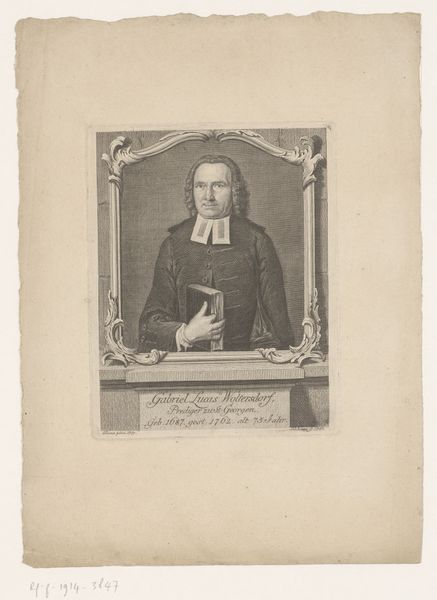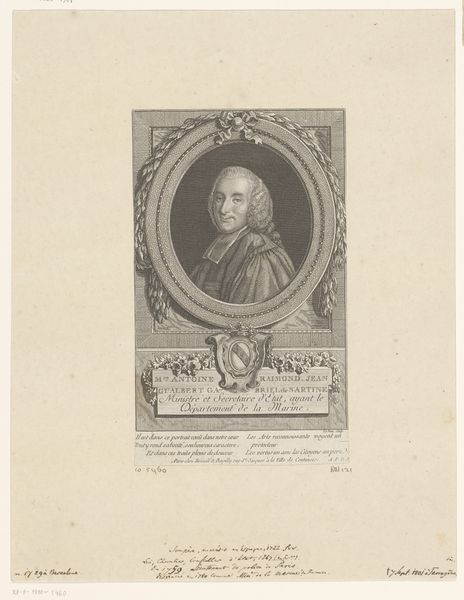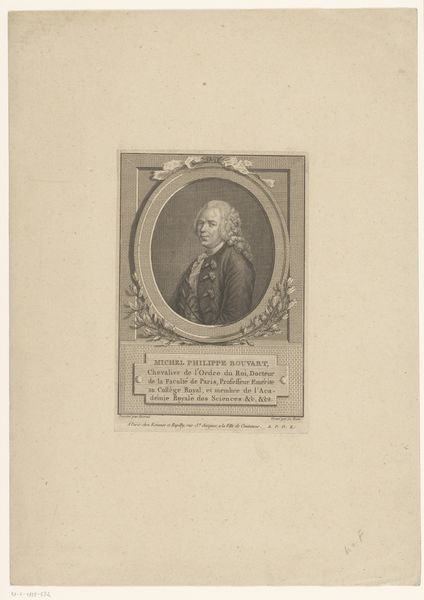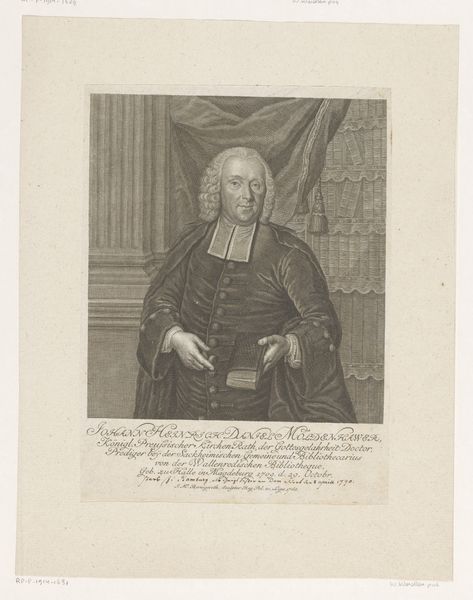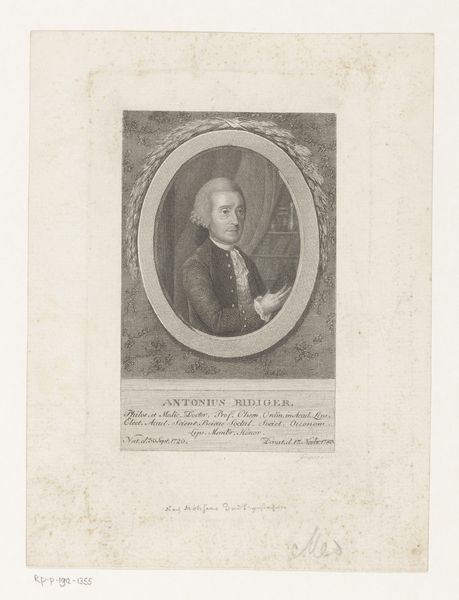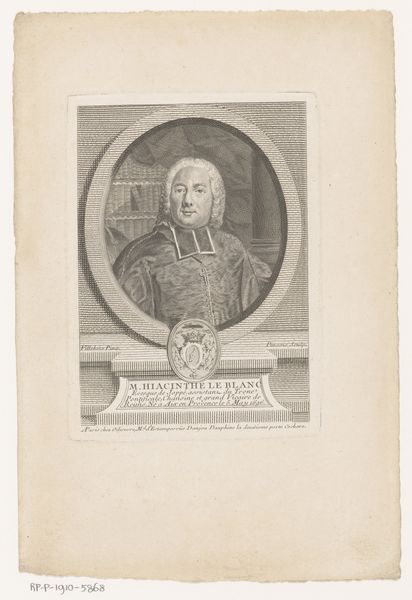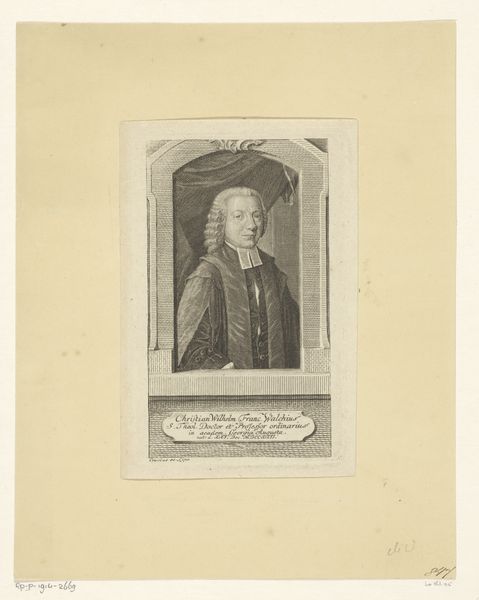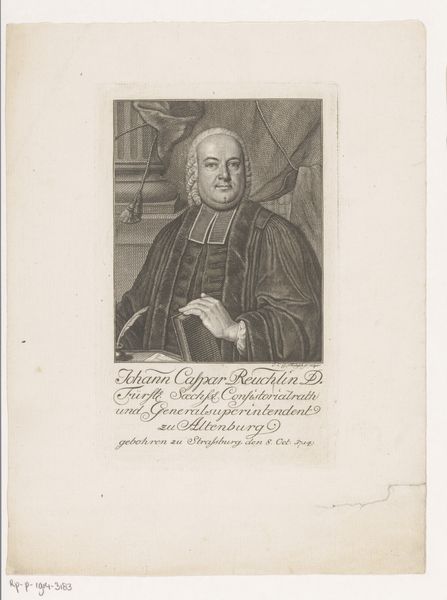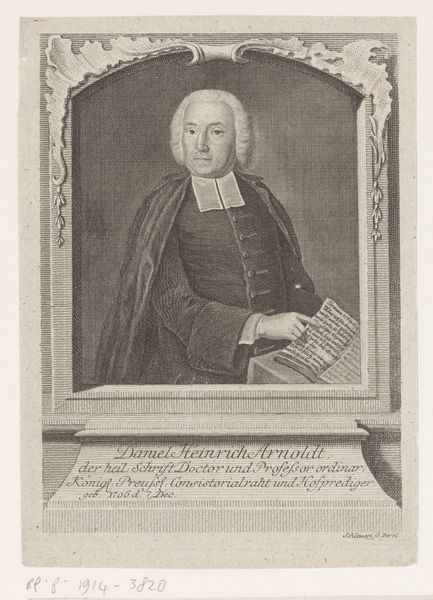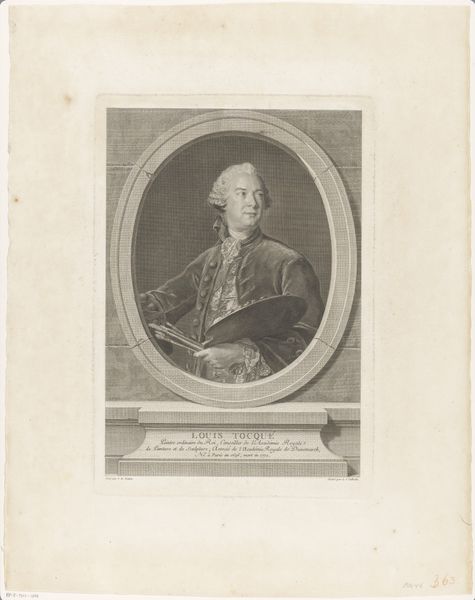
print, engraving
#
portrait
#
baroque
# print
#
old engraving style
#
personal sketchbook
#
history-painting
#
engraving
Dimensions: height 200 mm, width 147 mm
Copyright: Rijks Museum: Open Domain
Curator: Here we have a print from the 1740s or 50s, titled "Portrait of Johann Gottfried Hirsch." The artist is Gottlieb Leberecht Crusius, and the work resides here in the Rijksmuseum collection. It is an engraving. Editor: It's stark, isn't it? Quite serious, a man framed by drapery, within another frame... all that careful carving and acid, it feels austere, disciplined. Curator: The social role of portraiture at this time was significant. These images solidified status, often commissioned by the sitter or his family to project a specific persona. Hirsch, as a pastor, would have been concerned with conveying piety and authority. Editor: The process of engraving, requiring skilled labor and specialized tools, also conferred authority. Each line is etched, demanding a permanence that photography or painting wouldn't necessarily have then. The printing, pulling the image from the metal... it speaks to reproducibility, to the dissemination of these ideas and status beyond a single wealthy patron. Curator: Absolutely. The text inscribed below Hirsch's image, declaring his role as pastor, directly engages with his social position. Prints like this one played a role in constructing and circulating images of civic leaders and religious figures. It would have impacted public perception, defining his identity for those beyond his immediate congregation. Editor: And notice the details in the rendering of his robes. That fabric required materials and human labour to weave. Look closer. Consider the paper it's printed on too: made from rags and fibers processed in specific workshops, all tied to industry and consumption of the Baroque era. The material says just as much about wealth and manufacture as does the carefully staged image of the Pastor. Curator: A very astute point. The layers of meaning embedded within even what seems a simple portrait reflect the complex societal fabric of the 18th century. Editor: Indeed. It's remarkable how much these "simple" images can reveal when you consider the material conditions of their creation and their role in that time.
Comments
No comments
Be the first to comment and join the conversation on the ultimate creative platform.
